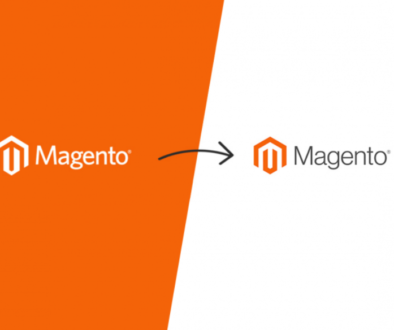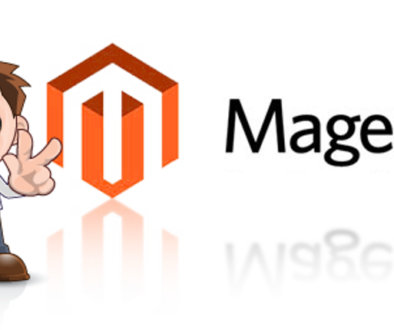E-Commerce Platforms: Open Vs. Closed!

Amy Dusto, Internet Retailer Associate Editor, granted clarity and insight into the (seemingly eternal) open-vs.-closed-source debate, an issue whose stakes are only raised when e-tailers have to make lasting decisions for supporting their own e-commerce endeavors. Like Firefox vs. Chrome or even Mac vs. PC, the debate carries innate bias because the sheer commitment required to become an authority on one or the other inevitably engenders serious loyalty.
The Groundwork
Let’s start with some definitions for the uninitiated (just in case). Open source e-commerce software refers to platforms or modules which may be modified at the source code level to suit a particular need or extend functionality. Magento is the prime example of open-source e-commerce platforms: for all its size and features, it remains a fundamentally malleable platform because developers can tweak and adjust its source code to their hearts’ content. Proprietary (closed) software, on the other hand, does not permit such access. Any changes to proprietary software must be originated or approved by the vendor.
There are pros and cons to each approach. To get a better picture, let’s examine remarks made by Gary Shar, Isaay.com CEO, and Erik Jeffries, RoyalDiscount.com IT Manager, both of whom have experience with each model. For background: Shar began with Magento Enterprise Edition, but switched to Demandware Inc. after experience difficulty in making site changes and coordinating support. In contrast, Jeffries prefers osCommerce’s open-source model because of a previous experience in which he was left stranded after a closed-source software provider was acquired and ceased product maintenance.
Remember, Erik Jeffries (EJ) supports open-source solutions, while Gary Shar (GS) prefers closed-source.
Cost
Open source is usually free to license, though often tiered price plans will be implemented to offer additional support or expanded out-of-the-box functionality, as is the case with Magento Enterprise Edition. Don’t forget to factor in human capital: robust online communities and forums often make it much easier to recruit open source developers. Developers appreciate not being tied to any specific platform, and open source troubleshooting or workarounds populate rapidly through the web once a solution is found.
(EJ): “[…] there’s more flexibility without vendor lock-in […] no commitments, contracts or maintenance fees. You just have the software to use.”
Closed source situations can get pricey quickly, especially when licensing gets added to fees for a dedicated web development team. On the other hand, hiring the right people can let you survive with what might otherwise be a meager staff, permitting lean overhead costs.
(GS): Development is the crucial cost consideration—many closed source companies price their software to scale as sales grow.
Features
Open source runs entirely on your schedule as long as you have the means and resources to realize an idea. In the middle of the night, even! It’s really something to see the solidarity exhibited by global developers once a great idea shows up somewhere. It’s crowd-sourcing at its finest!
(EJ): If you don’t own the source code and you have no way to modify what you’ve got, it stifles innovation. With open source, you can do whatever you want, you just have to have the expertise. There are just so many more options available.”
Closed source obviously cuts off access to the base code, but it isn’t black and white. Many companies will permit some code modification if you remain communicative and follow guidelines. In terms of brand-new functionality, you’re placing your trust with the platform’s developers; if they’re speedy and conscientious, advancements can come along fairly often. It all depends on the originators.
(GS): “While open source, I agree, is great for innovation, I was constantly told [by Magento], ‘No, you cannot do that’ and ‘we could certainly figure it out, but it would take us probably two years.’”
Support
As mentioned above, open source benefits greatly from a widespread development community to ensure quality. Moreover, none of those folks have to meet company deadlines or acquiesce to shareholders to keep their jobs; it’s a labor of love. They serve the software, not the other way around.
(EJ): “More eyes on the code make it more secure, versus a couple of engineers building something. [When we used closed-source software] it was like pulling teeth to get someone to help.”
Yet a sense of accountability prevails in closed-source software development—it’s their actual job to guarantee reliability and proper maintenance. And without a regulated approval process, certain integrations or schemes may slip through the cracks, whether they’re rare or fringe cases or just so new that there’s hardly any support literature out there.
(GS): “[with open source] you’re the pioneer. There is no one who actually wrote the source code to sit down and help you with it. I don’t want to go to a forum—I have no idea if these people are knowledgeable.”
What E-Commerce Platforms Have in Common
The fact is, no platform would persist if it didn’t contribute to a number of thriving online businesses. The software type can’t save a rotten business model, and a runaway success on the wrong platform certainly wouldn’t plummet just because of the mismatch. Both interviewees agree that proper project management in tandem with a top-notch development team is the most consistent recipe for success.
Their final words?
(EJ): “There’s always a trade-off between performance and features. The key is to find a developer or a software platform that you trust.”
(GS): “It’s about who’s building your system and the resources. I like the idea of having people write the code and paying them to do it.”

